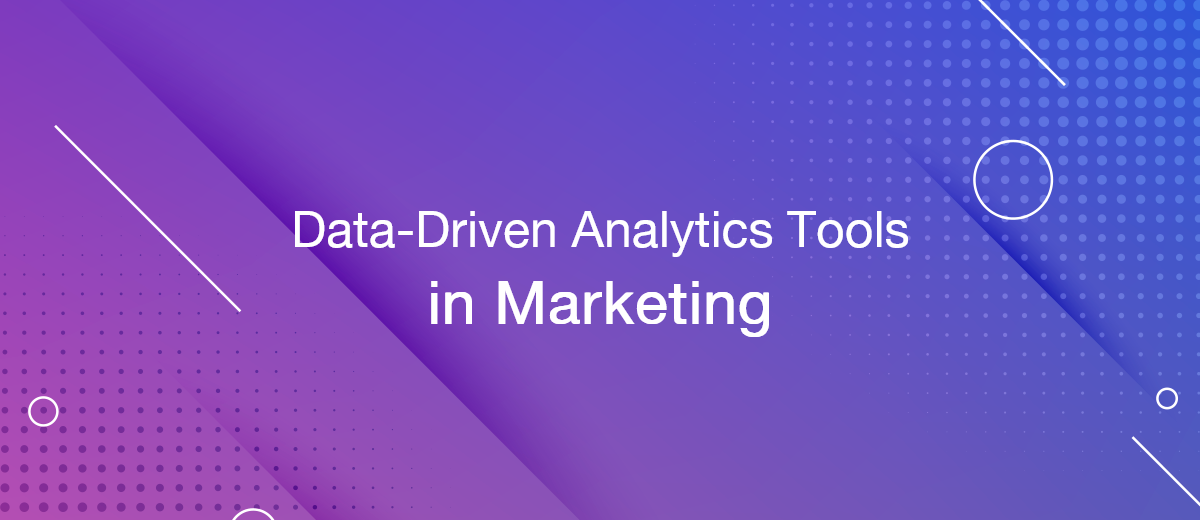Data-Driven Decision Making: Utilizing App Analytics for Marketing Insights
You can make better business decisions through data analysis. Analyzing trends, tracking patterns, and managing recurring issues will improve the efficacy of your strategies—always do your research. However, it also takes up a lot of time. You’ll find yourself stumped with more data to collect and interpret as your business grows, making it harder to juggle other tasks. Instead of offloading everything to other employees, speed up data analysis with marketing analytics tools. It’s a cost-efficient and accessible approach. See which platforms you can use, assess their accuracy in computing your metrics, and try ones you can integrate into your business.
What are Marketing Analytics Tools
Hastily assuming that your campaigns are working because they’re bringing in sales will produce misleading results. You have to deduct your additional expenses first. Your net income only becomes positive after earning back what you spent on inventory, marketing, and sponsorships.
Calculating your return on ad spend (ROAS) is straightforward. However, as your product inventory and client base grow, your balance sheets become trickier to organize and compute. You might end up spending hours just tracking orders.
This is where marketing analytics tools can help. They encompass software programs that help collect, manage, and track campaign output. More simply put, they measure your marketing performance. You can spend less time collecting data and more time analyzing how to improve your campaigns moving forward.
Ways to Use Data-Driven Analytics Tools in Marketing

Before investing in marketing analytics tools, see how you can integrate them into your data analyses and accounting processes. Business owners often use them in tracking the following metrics:
1. Consumer Behavior
There are several ways to track consumer behavior. You can monitor top eCommerce purchases, trending social media posts, viral forum comments, and recent Google Analytics. The idea is to collect data on what your consumers look for online.
Considering the massive digital footprint the average consumer leaves, you might feel overwhelmed by the data you need to analyze. Most people have several online profiles. Just imagine how much time and resources you’ll need to monitor their data across various platforms.
Instead, use data-driven marketing tools. Program them to analyze every user that matches your ideal buyer persona—focus on qualified prospects and interested buyers. They should filter and summarize all the collected information.
2. Industry Trends
Tracking industry trends lets you stay ahead of the competition. You can compile data from publications, news outlets, social media sites, consumer reports, and online forums. They’ll provide first-hand insights into what your target market demands from the industry.
That said, this process involves massive amounts of data. Depending on your audience size, you could end up spending hours just gathering analytics reports from various platforms. It’s already a full-time job in some cases.
But like other business owners, you likely won’t have enough time to collect all this data manually. Instead, save resources by automating the data collection process. Program your marketing analytics tool to pull relevant data from users that match your ideal buyer persona—focus on analyzing and interpreting the results.
3. Marketing Performance
You’ll find it harder to monitor your marketing efforts as you launch more campaigns, especially if you’re selling on multiple platforms. Analyzing their results could take hours. You’ll have to assess your target demographics, content strategy, and published visuals, among other elements. Also, adjusting just one of these variables vastly alters outcomes.
For instance, if you’re running ads on Instagram, Facebook, X (formerly Twitter), and Google, you’d have three ad accounts. Toggling between them wastes time. And you can’t rush the process either because you might overlook small yet crucial details.


The best approach is to link all the social media sites, blogs, and shops where you run campaigns under a single platform. Doing so lets you pull and analyze data from one place.
4. Profits and Revenue
Stop recording your profits manually. You need an automated system that tracks all incoming and outgoing funds as your business grows. It’s a more efficient approach. You can use the time you save tracking sales to analyze other daily transactions, plus you’ll cut the risk of accounting inaccuracies.
Make sure you link all your checkout pages properly. Your analytics tool should track sales, refunds, and abandoned carts in real time; otherwise, it might interchange failed and fulfilled orders, causing errors in your balance sheets.
5. A/B Testing Results
A/B testing is very time-consuming. Between researching marketing variables and monitoring ongoing campaigns, you’ll barely have enough time to analyze the results. And your tests will go to waste if they don’t translate to your succeeding strategies.
Michael Maximoff, the Co-Founder & Managing Partner of Belkins, suggests streamlining the process by automating rote work, e.g., data collection. He says, “Most marketers don’t realize how much resources they waste on tedious, mechanical tasks when A/B testing. Take data entry as an example. Although it’s a simple activity you can perform mindlessly, it still takes up a lot of time. Automate these routine tasks instead. Focus on analyzing your testing results and how to improve your future campaigns, not gathering data.”
6. Social Media Integration Performance
Streamline your social media management strategy with universal marketing tools. Ideally, they should compile your cross-platform campaign data, filter audience reactions, and monitor brand mentions. You’ll have an easier time analyzing consolidated insights.
To improve the accuracy of your analyses, make sure you pull and interpret data in real-time. Again, consumer trends fluctuate quickly. Waiting too long to read campaign insights compromises the overall efficacy of your strategies—you might end up with outdated, inaccurate findings.
Note: Avoid taking social media comments at face value. When analyzing feedback, reviews, and complaints, comprehend what users felt when typing these. Sentiment analysis lets you better understand consumer needs.
7. Sales Funnel Results
Analyzing your sales funnel could help boost your conversion rates. Go through the different stages of the customer journey, look for any roadblocks that prospects encounter, and find ways to streamline the process. Make it as easy as possible to buy your products or services.
Let’s say you have an eCommerce shop. Link it to your marketing analytics tool and see what typically prompts visitors to leave your website. Address common issues, like disorganized listings, limited payment options, and slow checkout pages.
Also, program your analytics tool to collect data from abandoned carts. Create an entirely new email marketing campaign focused on converting users who left their online shopping cart at the last minute. They’re already near the end of your sales funnel. Find out why they changed their minds and see what’s the quickest way to get them back on your website.
8. Ad Targets
If you’re having trouble hitting your ROAS, try limiting your ad spend. Many business owners unknowingly overspend on vague campaigns that target a broad audience—they think a higher view count increases conversion rates. Unfortunately, that’s rarely the case. It doesn’t matter how many clicks or views your ads get if they come from people who aren’t interested in your brand.
Limit your ad audience to your target market. Use marketing analytics tools to analyze the demographics of your average buyer, then incorporate them into your succeeding campaigns. It’s easier to hit your ROAS on small, targeted ads.
Level up Your Marketing Efforts with Analytics Tools
The key to maximizing any marketing analytics tool is optimization. You should customize the platform to your business model, KPIs, performance metrics, and industry trends. Avoid using universal tools that execute generic formulas. Again, there’s no one-size-fits-all approach to data analysis—you need a system suited to your specific needs.
Optimization, however, goes beyond the mere customization of tools. It involves a in-depth understanding of your target audience's behaviors and preferences. By aligning the capabilities of your analytics tools with the specific nuances of your market, you can unlock insights that are both actionable and impactful. This may involve segmenting your audience more granularity, experimenting with different content strategies, or even reevaluating your key performance indicators (KPIs) to better reflect the realities of your market.
Remember, the goal is to make
data-driven decisions that resonate with your audience and drive tangible results in terms of engagement, conversion, and customer
loyalty. By leveraging the full potential of app analytics tools, you
can transform vast amounts of data into strategic assets, giving your marketing
efforts a significant edge in a competitive digital landscape.
Apix-Drive is a universal tool that will quickly streamline any workflow, freeing you from routine and possible financial losses. Try ApiX-Drive in action and see how useful it is for you personally. In the meantime, when you are setting up connections between systems, think about where you are investing your free time, because now you will have much more of it.

